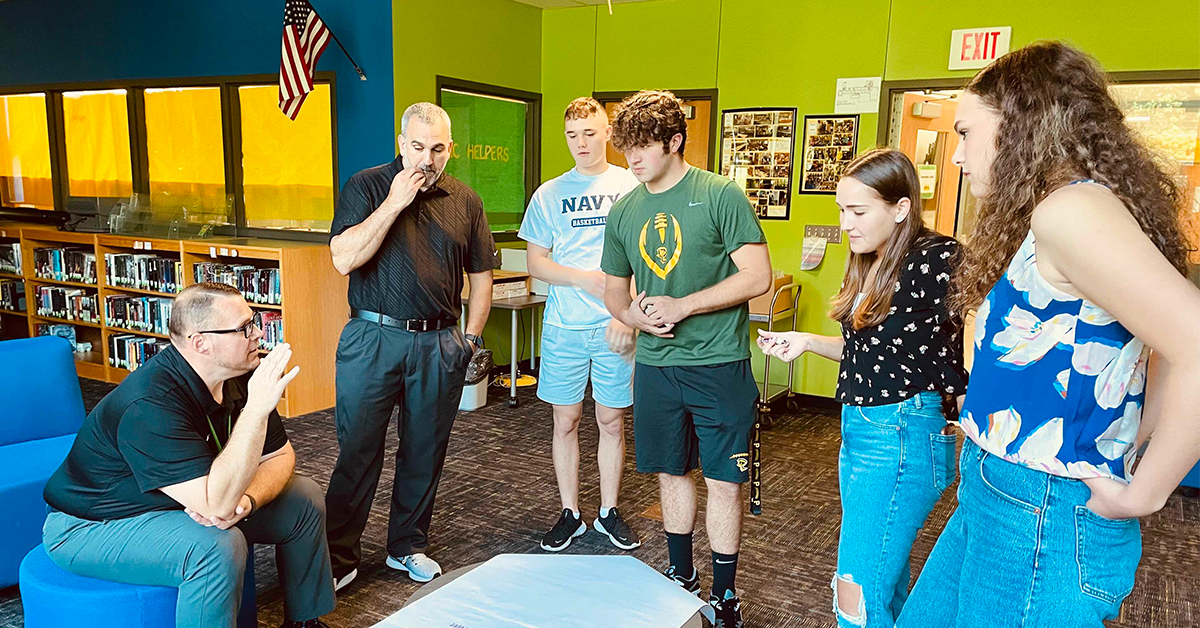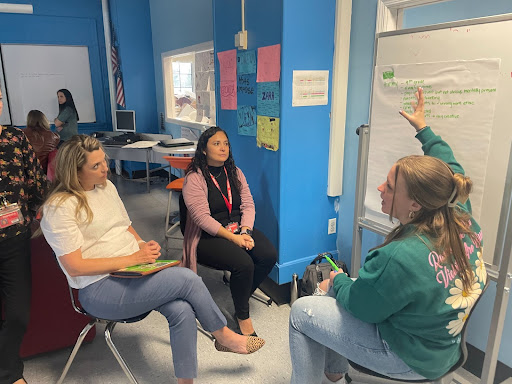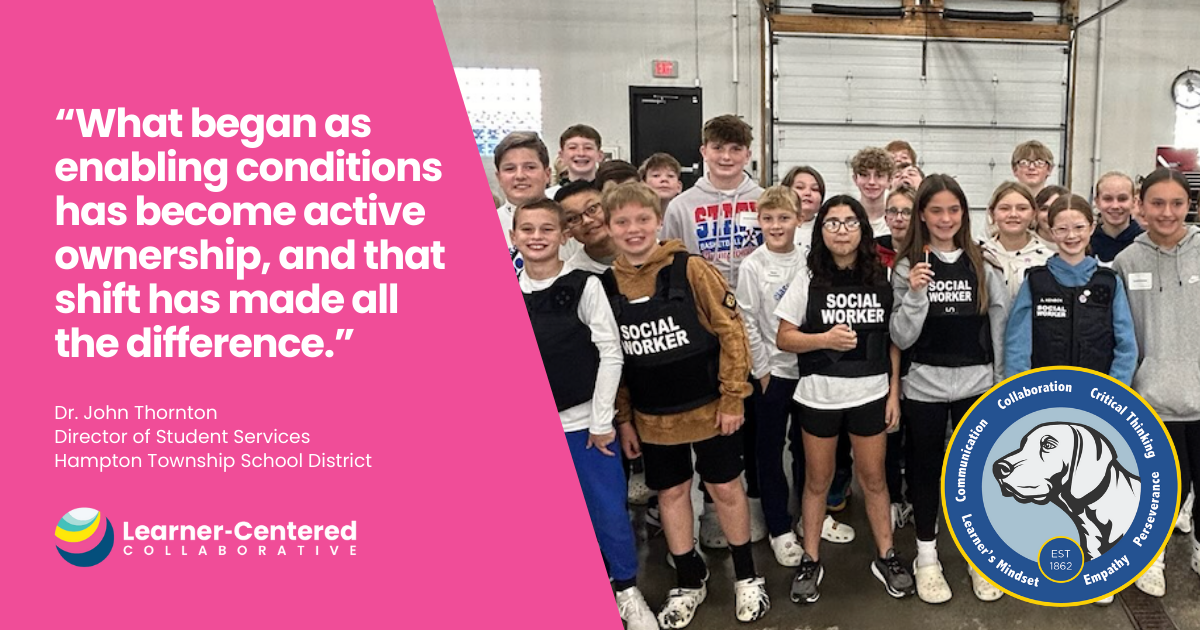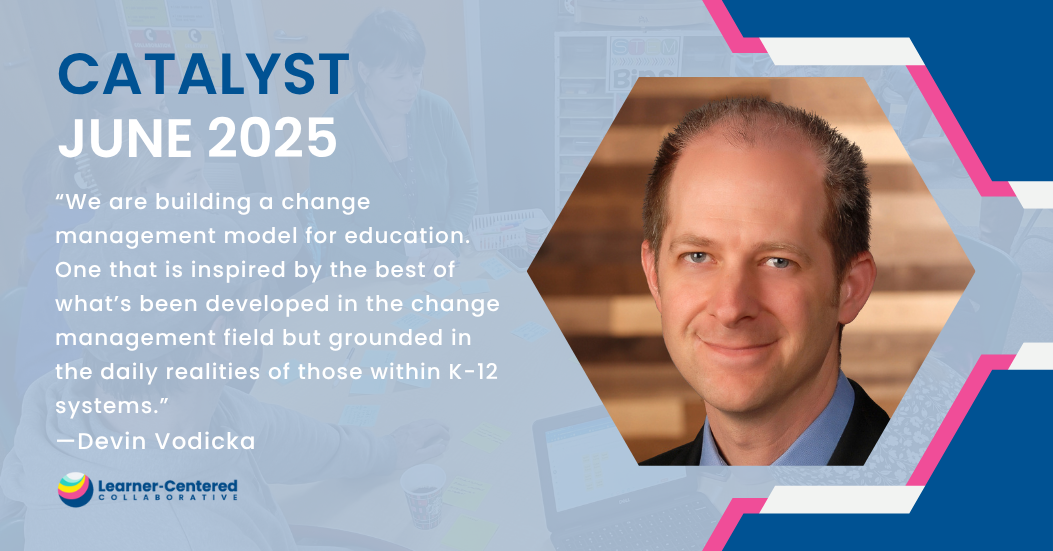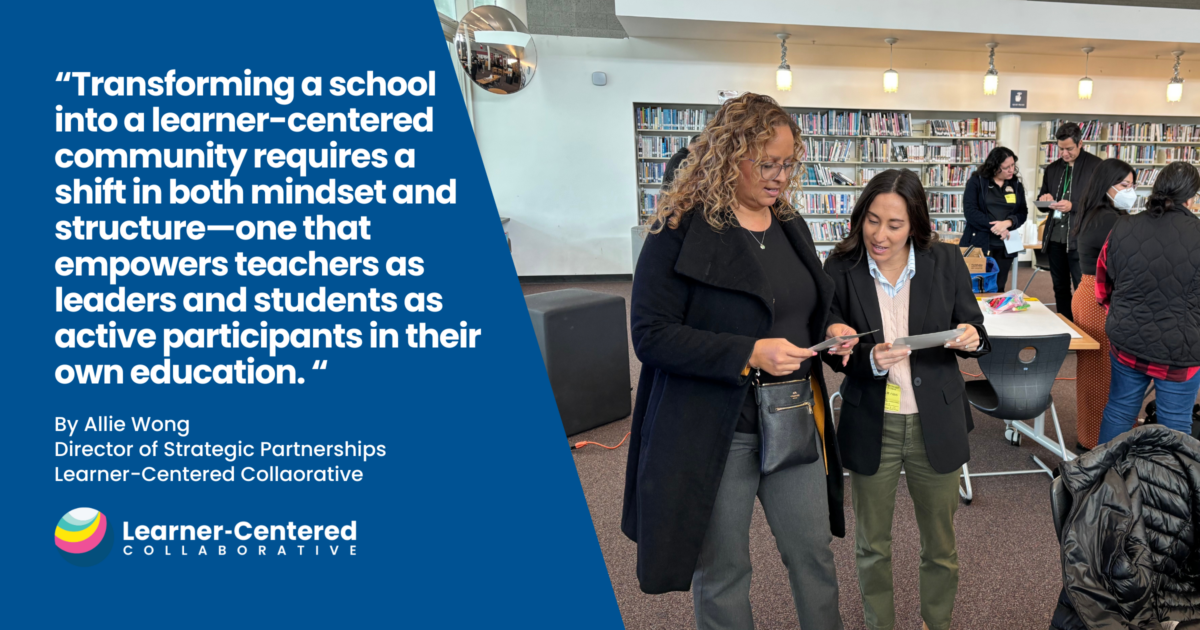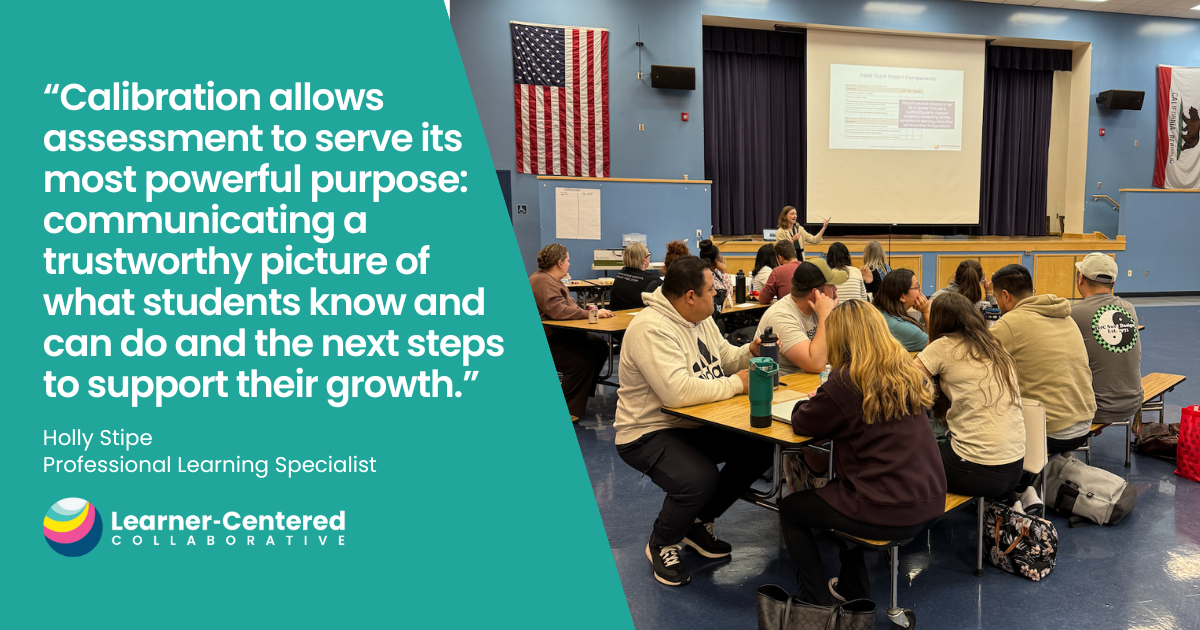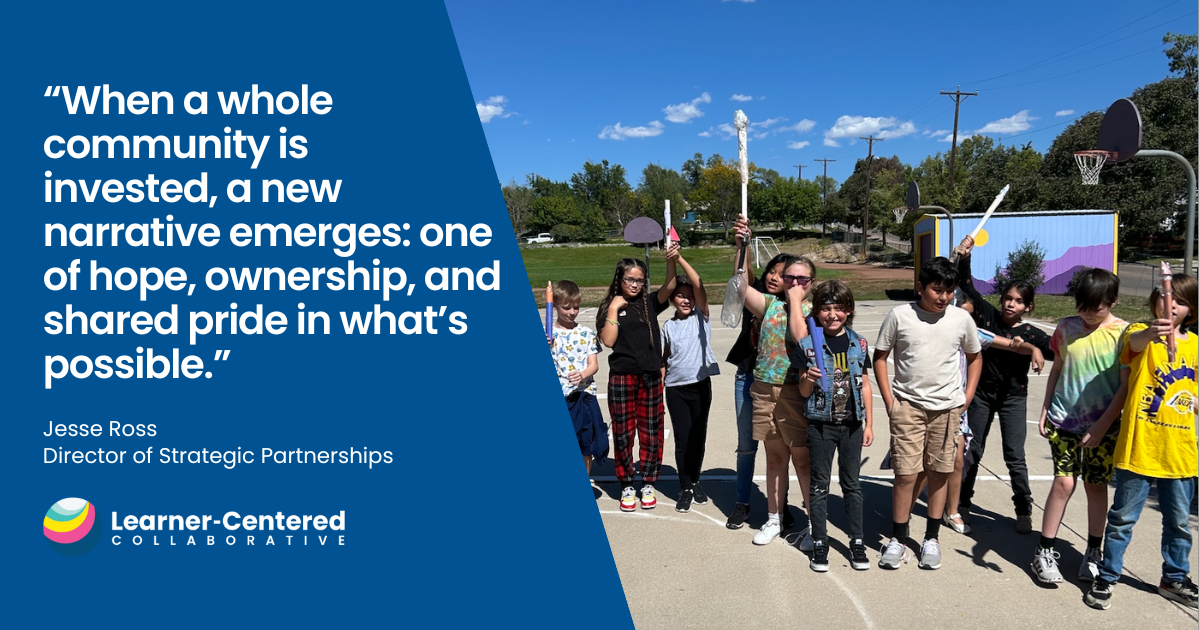4 Strategies for Listening to Students to Spark Change
When thinking about how school buildings have traditionally been constructed, how bell schedules have come to be, and how academic policies have historically been authored, images of adults come to mind. Grownups have been the decision makers. As we think about what school must be for learners today and into the future—a learner-centered experience rooted in personalized, authentic, competency-based, and inclusive and equitable learning where learners collaborate, have agency, and solve real-world problems that matter to them—it becomes clear that students need to be integral to the decision making process.
Devin Vodicka shares the profound impact students can have on a district when their voices are heard in this article
Schools around the country are tapping into the power of listening to learners and are finding the feedback to be foundational to successful change. In some cases, it validates the priorities already identified by the adults. In others, it illuminates blindspots, and perhaps most importantly, creates student buy-in by giving them a seat at the table and a chance to shape their school experience. As you consider elevating student voices to inform change in your school, a critical first step is to identify which voices to include and how you will gather as many diverse perspectives as possible.
Check out this tool with high impact questions you can pose to your learners.
Let’s explore 4 strategies for elevating student voice to inform your school transformation.
1. Student interviews
Interviewing learners is an effective way to gather deep, meaningful feedback. We suggest meeting for 10-15 minutes with 1-3 students at a time. Want to dive more deeply into the student experience? Consider shadowing a student.
Mineola Union Free School District in New York interviewed students to shape the school’s plans for transformational change. Students reflected on the school’s strengths as well as ideas for improvement and expansion. This approach influenced the alignment of priorities, structures, and systems that supported learners to design their daily schedule, access curriculum, and engage in meaningful learning experiences based on their needs.
Learn more about how we collaborated with Mineola here.
2. Student focus groups
Student focus groups are an effective way to gather qualitative input from a larger number of students. We recommend meeting for 15-30 minutes with up to 10 students.
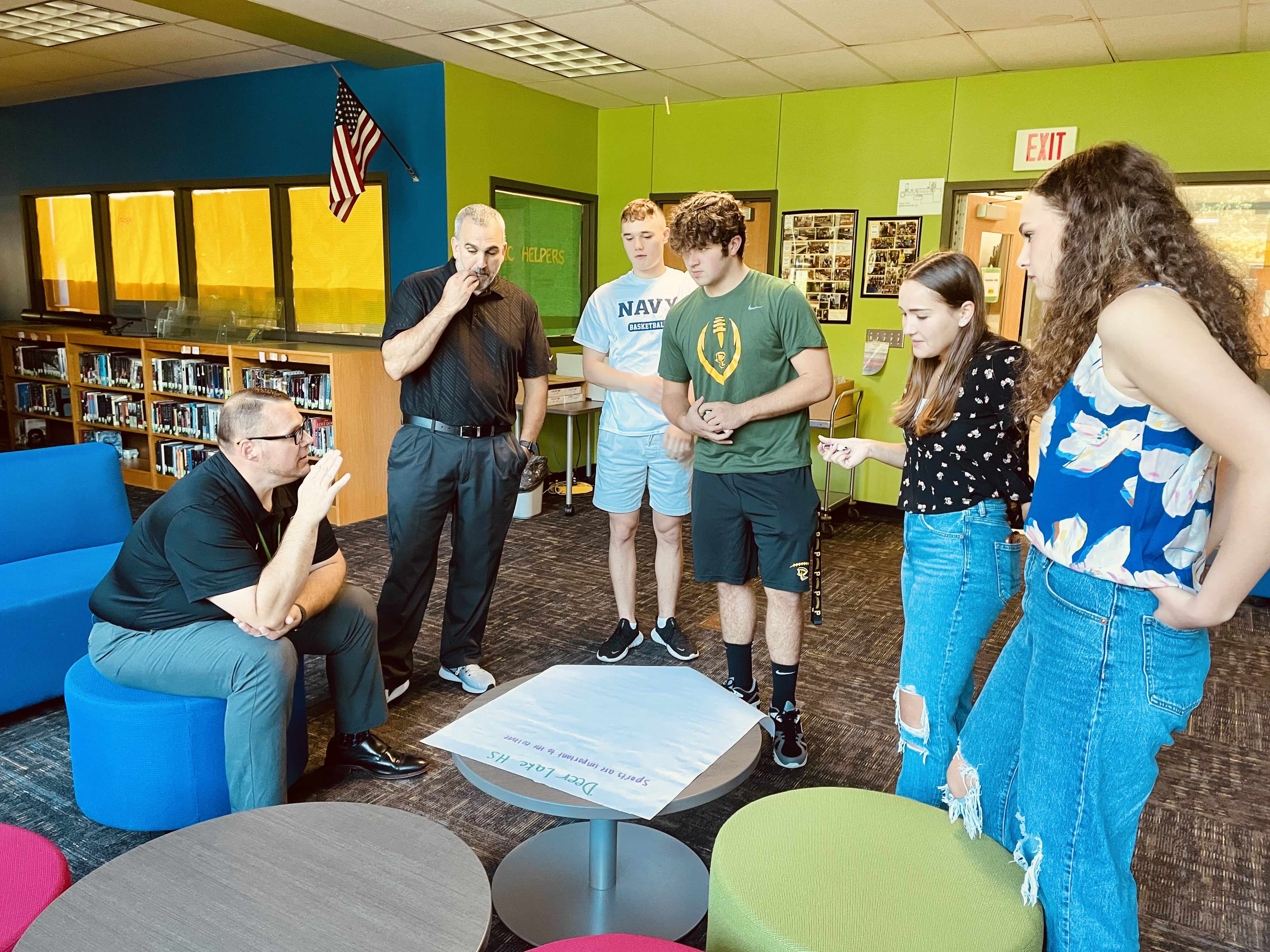 In Deer Lakes School District in Pennsylvania, school and district leaders met with focus groups at the middle and high schools. Students from a variety of backgrounds, academic achievement levels, and local contexts were intentionally included. During the panel, one leader was designated as a note taker, capturing student quotes, ideas, and feedback during the conversation. Afterward, the team debriefed to identify themes and takeaways. Right away, they saw the value of the insights gathered,
In Deer Lakes School District in Pennsylvania, school and district leaders met with focus groups at the middle and high schools. Students from a variety of backgrounds, academic achievement levels, and local contexts were intentionally included. During the panel, one leader was designated as a note taker, capturing student quotes, ideas, and feedback during the conversation. Afterward, the team debriefed to identify themes and takeaways. Right away, they saw the value of the insights gathered,
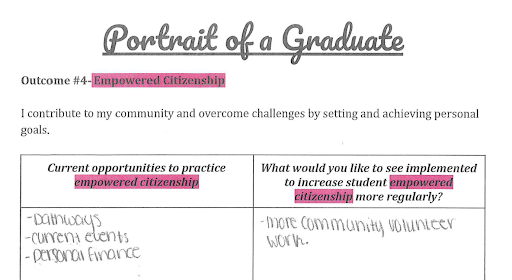 They planned another focus group to learn more about how students were developing the Portrait of a Graduate outcomes in school and what they wished they could change. The second group’s format was less Q&A and more small-group ideation.
They planned another focus group to learn more about how students were developing the Portrait of a Graduate outcomes in school and what they wished they could change. The second group’s format was less Q&A and more small-group ideation.
3. Student forums
Student forums are ideal for larger groups, and they can be conducted in person or virtually. Typically, a student forum runs for 30-60 minutes.
 Escondido Unified School District hosted nine student forums with 20-30 students each. The Learner-Centered Collaborative facilitators used the “Continue-Start-Stop” protocol to guide students through a discovery conversation allowing them to reflect on their personal academic experiences and then work collaboratively to summarize their collective academic experiences and journey.
Escondido Unified School District hosted nine student forums with 20-30 students each. The Learner-Centered Collaborative facilitators used the “Continue-Start-Stop” protocol to guide students through a discovery conversation allowing them to reflect on their personal academic experiences and then work collaboratively to summarize their collective academic experiences and journey.
Hope Academy in Arizona leverages student forums quarterly to gather student feedback. Recently, students shared that they didn’t like having to commit to electives for an entire quarter. In response, they’re currently testing having students sign up for elective experiences on a weekly basis.
4. Student surveys
Student surveys are efficient for gathering feedback from larger groups of students. While you lose the ability to capture the nuance of body language and facial expressions, the tradeoff is that you can include far more voices. We recommend a blend of surveys with interviews, panels, and/or forums.
In Santa Paula Unified School District in California, 1,896 4th – 12th grade students participated in a survey to help school and district leaders understand how often students have opportunities to develop skills such as agency, problem solving, and collaboration. Seeking input from student stakeholders was a critical step, allowing district and school leaders to build trust and encourage ownership with students. Ultimately, their feedback informed the creation of a district learning model.
Explore more ways our partner schools are including and amplifying student voices.
Listening to learners is a critical step to inform lasting change in a school or district. What emerges when we elevate student voices are hidden and unexpected gems that maximize learning and joy in the school environment. By elevating their voices, it also builds early buy-in for near-term and future changes.
Interested in getting started? Check out this tool Questions to Ask Learners to plan how you’ll meet with students 1-1, in panels, forums, or through a survey.
Want to discuss elevating student voice in your context? Let’s connect
